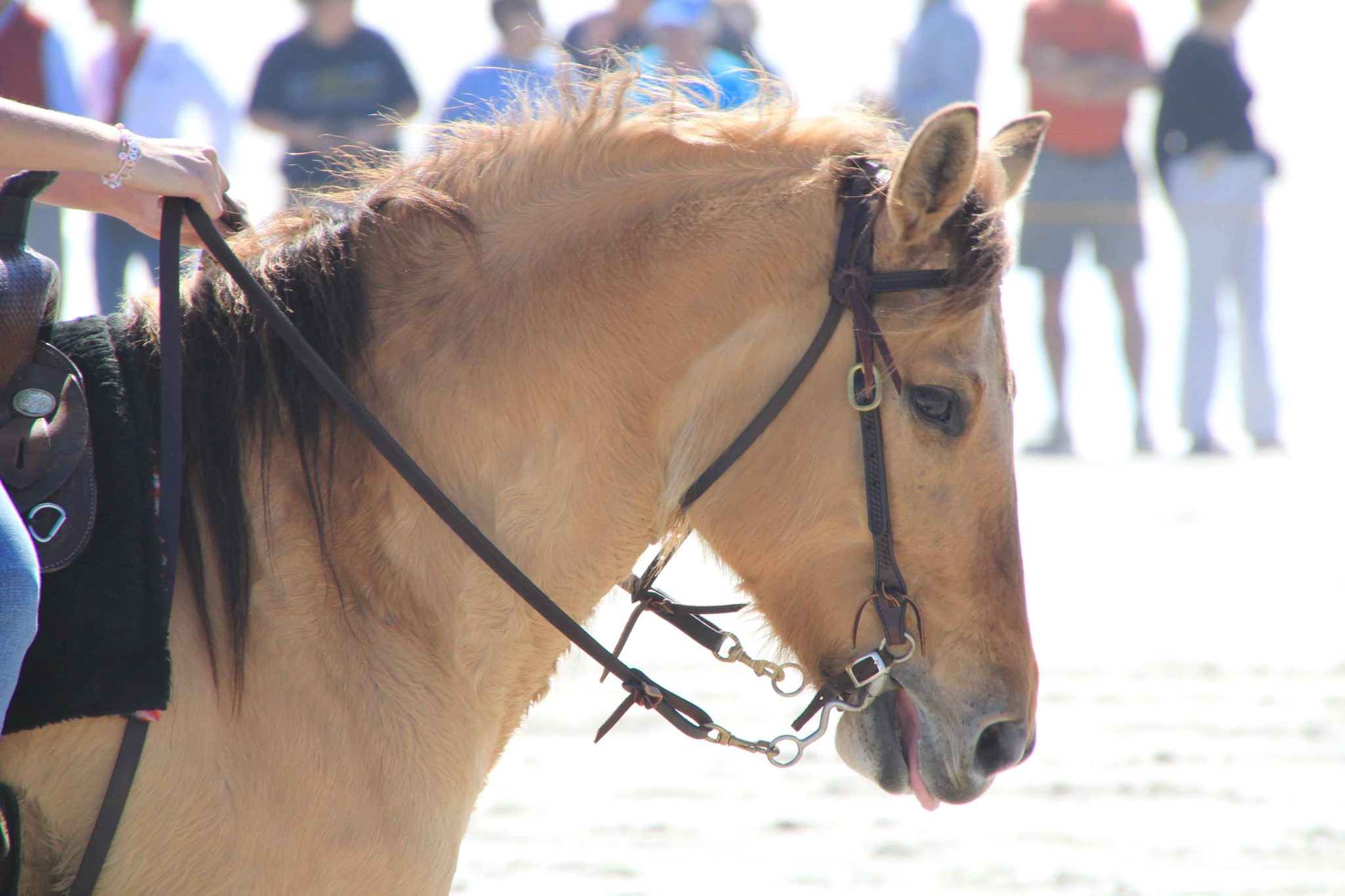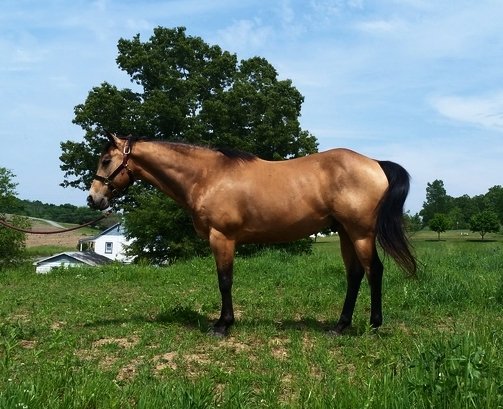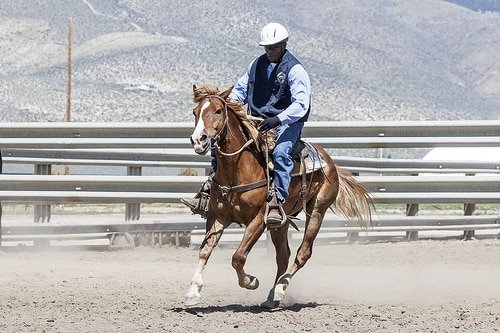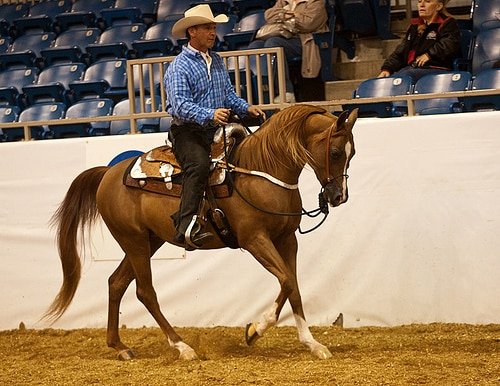
Last week we discussed conditioning your horse after a layoff. But, just as important as horse fitness is rider fitness. No matter what level of exercise you maintained during the layoff, there are still going to be riding muscles that need to be brought back into shape.
An unfit rider can do a lot of damage. In order for your horse to lift his back and use his body correctly, you, as the rider, need to move with the horse. If you are too unsteady, you will end up landing hard on his back, particularly at the trot. This will cause your horse to hollow his back. As soon as he hollows his back, he can no longer bring his hind end up under himself. This causes his gaits to become rough and the rider to bounce more. (For more on collection, check out the article about The Anatomy of Collection.)
Exercises for Rider Fitness
Exercise ball
An exercise ball is a great tool to simulate good riding position. You can pick one up online for $25 or less. Once the ball is fully inflated, sitting on it like you would a horse is a great exercise to get — or keep — those riding muscles in shape.
If you have never used an exercise ball before, it is best to start out in a chair seat until you get the hang of balancing. Once you are steady enough, you can slowly pull your legs back underneath you so you are straddling the ball more like you would ride a horse. Balancing on an exercise ball engages those all-important core and thigh muscles. It also forces you to maintain good posture as slouching will cause you to lose your balance.
Tips for Success With the Exercise Ball
1. Focus on gripping with your groin muscles.
Like on the horse, you should not be gripping with your knees or calves. The position will be a little awkward because exercise balls are not large enough to stretch your legs down into position while straddling it. Focus on getting your thighs in the right position and let your lower leg simply stretch out behind you. Your knee and calves should be loose when riding a horse anyway. This position will make it much more difficult to balance. It also limits your ability to grip with your lower leg.
2. Make sure your shoulders are straight.
We often talking about keeping our shoulder back when riding. However, this misnomer often leads to sticking your chest out unnaturally while arching your back. Your spine should be straight with your shoulders parallel with your hips.
3. Don’t shift your weight to one side.
Many times we put more weight on one seat bone than the other without even realizing it. This pushes your shoulders out of position, causing your horse to drop his shoulder. Remember, the horse’s shoulders mimick the rider’s shoulders.
4. Don’t try to hold the position for more than 20 to 30 seconds in the beginning.
It is better to get several intervals of 20 to 30 seconds at a time while maintaining good posture than it is to press too far and end up losing your posture when you have to over compensate to maintain your balance. You can gradually lengthen this interval.
Stair Stretch
The stair stretch is another classic exercise for maintaining rider fitness. Whereas the exercise ball focuses primarily on your core and thighs, the stair stretch focuses on your leg position. This does not require any special equipment. All you need is one stair.
Place the balls of your feet on the stair with your heels out over the edge. Keep your feet shoulder width apart. Now, here is where a lot of people will tell you to focus on stretching your heels down. While this can be somewhat beneficial, that is not the most important thing to focus on. You need to focus on maintaing good riding posture. Your knees should be slightly bent, your spine straight, your hips and shoulders parallel, and your elbows in by your sides and bent at of 90 degree angle to simulate holding the reins.
Tips for Success with the Stair Stretch
1. Don’t focus on “heels down.”
If you remember our discussion back in July about the misnomer of heels down, you will know that forcing your heels down shifts your weight to your heels. That is not a very athletic position. Bringing your leg back under you and putting your weight on the balls of your feet directly over the stirrup bar is the most secure position for riding. Your heels should be slightly lower than the ball of your foot, but over exaggeration harms your balance and makes your seat unsteady which interferes with the horse. (For more on why “heels down” does more harm than good, click here.)
2. Don’t try to hold the position for more than 15 to 20 seconds in the beginning.
It is better to get several intervals of 15 to 20 seconds at a time while maintaining good posture than it is to press too long and end up losing your posture when you have to overcompensate to maintain your balance. You can gradually lengthen this interval.
Wall Sits
This is another exercise to strengthen those core muscles, an ever-important part of rider fitness. Place your back flat against a wall with your feet out in front of you and your thighs parallel to the floor. It should look like you are sitting in a chair sans chair. The wall will keep your spine and shoulders straight. Focus on engaging your core muscles to support yourself.
Tips for Success with Wall Sits
1. Don’t brace against the wall.
Really use those core muscles and let the wall simply act as a guide, not a crutch.
2. Don’t try to hold the position for more than 15 to 20 seconds in the beginning.
It is better to get several intervals of 15 to 20 seconds at a time while maintaining good posture than it is to press too long and end up losing your posture when you have to overcompensate to maintain your balance. You can gradually lengthen this interval.
Squats
This rider fitness exercise is similar to the wall sit. Place your feet shoulder-width apart. Keep that spine straight and shoulders parallel with the hips. Bend at the knee and squat as far as you can without losing your posture. Do not push it too far! A shallow squat with good posture is better than a deep squat where your shoulders come out of position as you lean forward to balance. This will engage your core muscles and create new muscle memory as you teach yourself to maintain better posture throughout the day.
Tips for Success with Squats
1. Incorporate them into your daily routine.
I don’t just mean incorporating them into your exercise routine. Need to lift something? Do a squat instead of leaning over to pick it up. This is a super-easy way to incorporate rider fitness exercises into your day. No more bending over. This also helps protect your back and shoulders if you have to repeatedly bend over to lift things. It also gives you more leverage when lifting heavy objects.
2. Don’t overdo it.
You don’t want to go lifting a 50-pound bag of feed in the beginning. Start with something small like picking up the pen you dropped. You can work your way up to heavier objects.
Cover Photo by lograstudio









